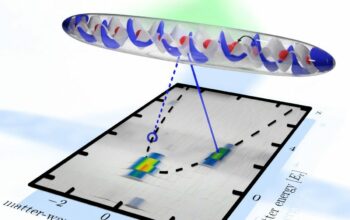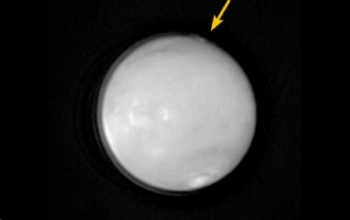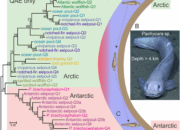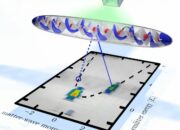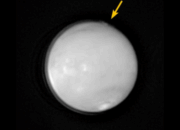In the realm of quantum mechanics and advanced materials science, recent developments have highlighted a significantly remarkable feat: a diamond collector capable of capturing photons at unprecedented velocities. This innovation not only thrusts forward the domain of photonics but ushers in a new era of practical applications in quantum information technology, telecommunications, and medical imaging.
Photonics, the science of harnessing and manipulating photons, the fundamental particles of light, has seen exponential progress in recent years. The cultivation of suitable materials for efficient photonic applications is critical, and diamonds have emerged as front-runners due to their unique properties—exemplified by their exceptional thermal conductivity, optical stability, and resilience against environmental perturbations.
The critical innovation discussed herein involves a specialized diamond structure, engineered at the atomic level to generate and collect photons in a highly efficient manner. This structured diamond leverages the incorporation of nitrogen-vacancy (NV) centers. These defects serve as quantum bits (qubits), enabling the diamond not only to emit, but also to harvest photons at astonishing speeds. The rate at which these photons can be collected has surpassed existing records, originating from extensive research aimed at optimizing photonic interactions.
The vast array of implications stemming from this phenomenon traverses various sectors. In telecommunications, the rapid acquisition of photons means higher bandwidths and faster data transmission rates. The diamond collector can significantly enhance the speed of light-based communication, paving the way for the augmentation of internet infrastructure. This advancement aligns with the ever-increasing demand for high-speed data connectivity, particularly in an era dominated by big data and real-time analytics.
Moreover, in the field of quantum computing, the ability to capture photons at record-breaking speeds is paramount. Photons are integral to quantum computing operations due to their capacity to convey information with minimal disturbance from external factors. The integration of such a diamond collector could potentially result in systems that outperform current quantum computing paradigms, catalyzing the development of robust, fault-tolerant quantum processors that utilize photonic qubits. As researchers explore the challenges inherent in maintaining coherence in qubit states, the enhanced photon collection offered by diamonds stands as a promising solution.
The medical imaging field is also poised to benefit from these advancements. Enhanced photon capture can lead to the development of more sensitive diagnostic tools, improving the quality and precision of imaging techniques such as photodynamic therapy or optical coherence tomography. The implications for early disease detection and treatment methodologies could be profound, demonstrating the intersection of physics and healthcare, which is becoming increasingly pronounced.
Nonetheless, the empirical validation of these theories and technologies remains vital. Rigorous testing and further experimentation are required to ascertain the physical limits and practical challenges associated with the deployment of this diamond collector. Current studies focus on the behavior of photons within the diamond lattice, revealing insights into the quantum mechanical interactions that govern photon capture and emission. Understanding these elements not only aids in the refinement of diamond materials but also fosters the exploration of even more advanced materials that may exhibit superior properties.
Additionally, the synthesis processes involved in creating these engineered diamonds underscore a significant area of interest. Techniques such as chemical vapor deposition (CVD) and high-pressure, high-temperature (HPHT) synthesis have been seminal in the fabrication of NV centers within diamonds. Advancements in the precision of these methods play a crucial role in enhancing the performance of diamond collectors, thus enabling the optimization of photon capture efficiency.
Furthermore, interdisciplinary collaboration is essential to exploit the potential of this discovery fully. Physicists, materials scientists, and engineers must work in concert to realize the practical applications of diamond photon collectors. The integration of knowledge from diverse fields will foster innovation and facilitate the evolution of technologies that were previously deemed unattainable.
Challenges remain, particularly in understanding the scalability of production techniques and the environmental impacts associated with the extraction and fabrication of diamonds. Sustainable practices that minimize ecological footprints while maximizing efficiency will be critical in the broader application of this technology. Ethical considerations surrounding diamond mining, an industry often marred by socio-political issues, must also be addressed as scientists navigate the complexities of deploying these advantageous materials.
The trajectory of diamond-based photonic technologies appears promising, with the current breakthrough serving as a catalyst for future research and development. As the scientific community continues to engage with the subtleties of photon behavior and material synthesis, the quest for innovation in photon capture will indubitably evoke advancements that extend beyond the realm of theoretical physics and into practical, real-world applications.
In conclusion, capturing photons at record speeds via diamond collectors epitomizes the confluence of cutting-edge physics and material science. The ramifications of this achievement extend across multiple domains, influencing telecommunications, quantum computing, and medical technologies, among others. As researchers deepen their investigations into the underlying mechanisms and potential applications, the future of diamond-based photonic devices holds significant promise for technological evolution in the 21st century.




